Custom Terrariums from Home
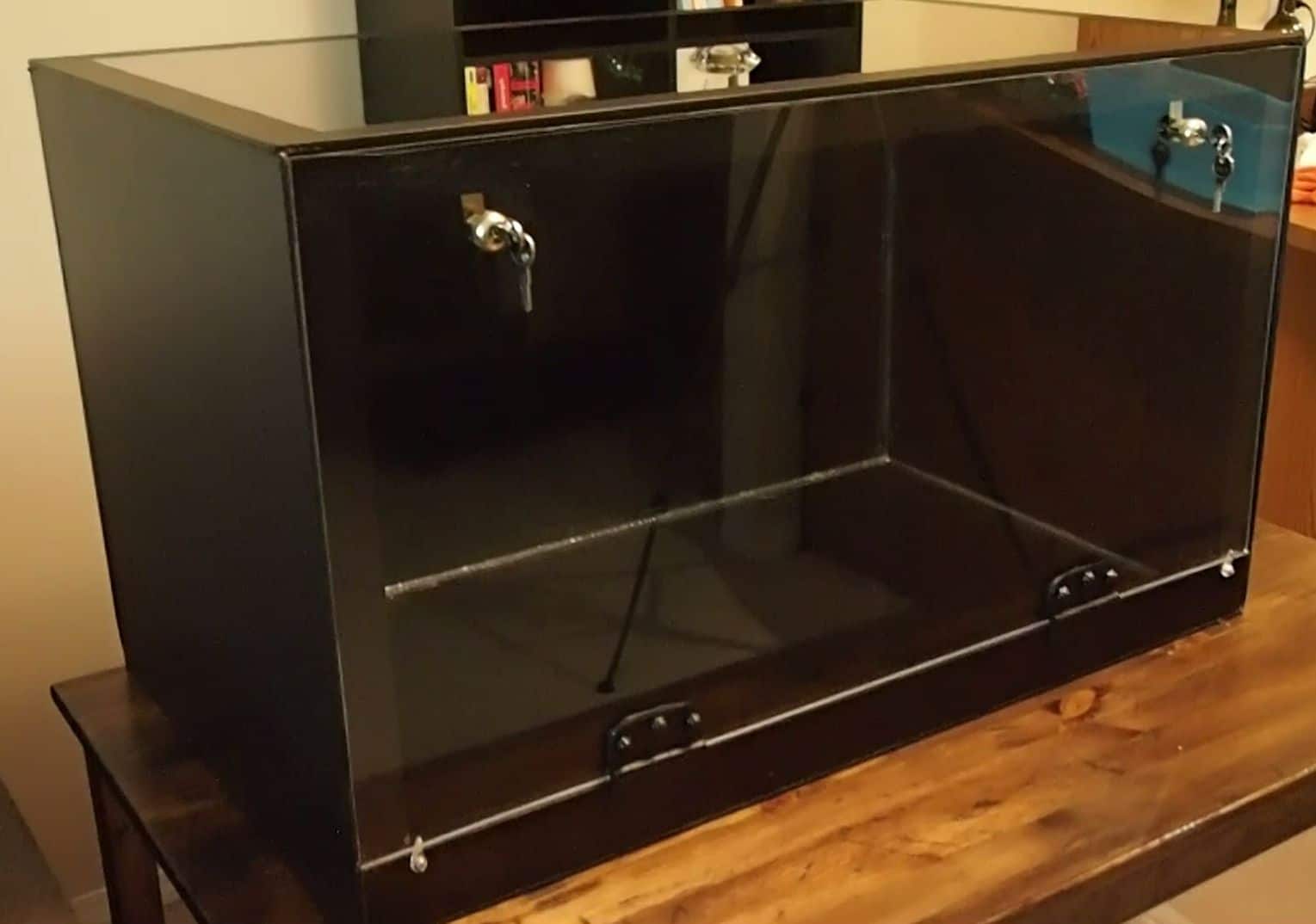
| Looking to create and build custom terrariums from home? Hopefully this article and video can point you in the right direction! This article would also be helpful if you are looking to convert an aquarium into a snake cage. |
IN THIS ARTICLE:
|
Should I build my own terrarium?
This is a good question. I believe you should only tackle a DIY build if:
-
- You aren’t trying to save money: DIY doesn’t always mean cheaper, after time and supplies doing-it-yourself can sometimes be more costly than purchasing something new.
- You actually enjoy building: This one seems obviously but some people go into a build with the idea that they are going to save money regardless of whether or not they enjoy building. Someone who doesn’t enjoy building will end up get very frustrated with the process and most likely spend MORE money than they would have if they just bought sometime brand new.
If you love to build and you don’t mind spending the money than you need to 100% move forward with your build! Custom terrariums will open up a door of possibilities for your animal, far beyond anything a store bought enclosure can provide.
In this article I breakdown my Custom Terrarium build for my Brazilian Rainbow Boa. If you want to skip right to the video, scroll right to the bottom of the article!
Side note: Why are Brazilian Rainbow Boas named after the rainbow? Scroll to the bottom for pictures of my boa… her colors will shock you!
Supplies and Plan
In the summer I stumbled across a stack of of old windows at a family farm. I immediately saw past their rough shape and started mentally building an enclosure out of them.
The windows cleaned up quite well and I was able to examine precisely what I had. What I had was this:
- 8 Windows with dimensions of 36″ L x 21″ W
This would work!
There are very few examples of custom terrariums being built from glass for snakes (for reasons I discuss below) so I really had to think through a detailed plan to determine whether or not this would work.
Here is a picture of the sketch I came up with:
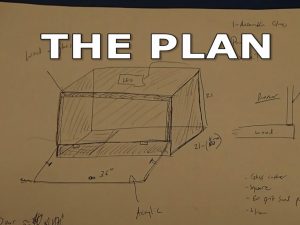
The plan was to:
- Create a glass box using 3 full sized sheets of glass (36″ x 21″), 1 for the top, 1 for the bottom and 1 for the back.
- I would have to cut glass for the side pieces which would measure roughly 21″ x 21″.
- The front facing opening would be trimmed with “something” (at the time I wasn’t sure I was going to use glass or wood, I used wood).
- A drop down acrylic door would be installed with the necessary ventilation drilled.
- The sides, back and bottom would be blacked out with paint.
As I am typing this I am realizing this exact procedure would probably also be suitable for converting an aquarium or fish tank into a snake enclosure.
The Glass Box
As stated about, the first step was to build the glass box.
First, I cut the glass for the sides. I used this cheap glass cutter dipped in mineral oil to score the glass. Once the glass was scored, a little bit of pressure was enough to force a break at the score line. Easy Peasy!
**Remember to wear safety glasses AND be mindful of the fact that the fresh cut edge of glass is sharp as hell! Sand it down afterwards**
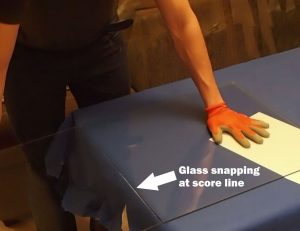
The actual assembly of the glass box was fairly straight forward. I followed Joey’s instruction from The King of DIY YouTube channel. If you’d like more detailed instructions on how to do this I highly recommend checking out his video here: https://www.youtube.com/watch?v=HSKIT2OLOYQ He has an AWESOME channel. Thanks for the help Joey!
Before I even started the build I spent some time thinking about the structure itself. How did I want the weight to be supported? It is very important to think this through.
Especially because I had to assemble the box in its wrong orientation. I.e. The front opening would have to face vertical during the assembly… assembling it in the right orientation would have required me to lower the top panel of glass on to the sides and back wall, I didn’t think that would be a smart way of doing it.
So the initial panel I placed flat on the table is actually the back panel. So back to the original point, how did I want the weight to be supported? Well I did not want any of the panels to be “hanging”, in other words I want the appropriate panels to be supporting the weight of the others.
Here’s how:
The side and back panels are placed directly on the bottom panel and the top panel is placed directly on top of the sides and back panels. This way the weight of the top panel is supported directly by the sides and back which is resting right on top of the bottom panel.
But remember… I had to assemble it out of its correct orientation so I had to keep that in mind. I.e. the “bottom” during the assembly was actually the back.
I set up strips of painters tape that could be flipped up once a sheet had been placed. The tape is strong enough to keep the glass in place while you work.
Other than that, all I did was run a bead of GE Silicone I (very important to use GE Silicone I and not II, I is non-toxic when dry) along the appropriate edges and place the glass in its rightful spot.
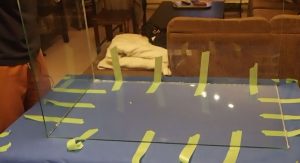
I used a square as I went to make sure things were straight. Silicone and glass is quite forgiving, you have time to move the panels around once they have been placed.
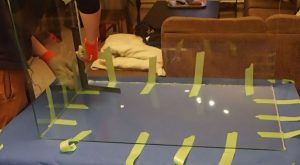
Done! Easy has that, it took only about 10 minutes from start to finish.
I did also add a bead of silicone on the inside seams to add more structure and a better seal.
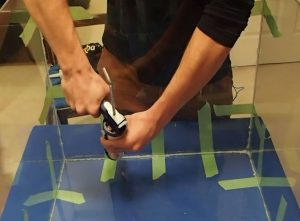
Pros and Cons of a Glass Terrarium
If you build your own custom terrariums you know there are pros and cons to the materials you use. Here are the pros and cons of the glass terrarium I built.
Pros:
- I already had the glass
- Glass is relativity easy to work with
Cons:
- It’s heavy
- Hard to raise humidity- I solved that by having a front facing acrylic door that closes tightly
- Too much light- snakes like to be in dark space, a clear glass terrarium can stress a snake out. I solved this by painting the sides black.
- Hard to maintain temperature- glass tends to loose heat relatively easy compared to a plastic enclosure. I plan on using Reflectix to help insualte the walls… although I was also pretty surprised at how well the paint itself works as insulation.
Paint it Black
Time to paint the walls! This was also pretty straight forward.
A foam roller is really the best way to go here as it will not leave any brush marks.
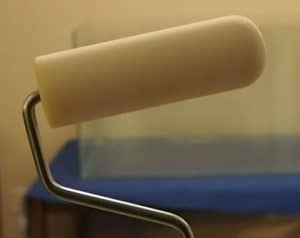
At first I used regular black acrylic paint as I was naive enough to think I would one have to do 1 MAYBE 2 coats. Wow was I wrong! It took a good 5-6 coats to fully cover the glass, luckily the dry time between coats is very short (15 minutes).
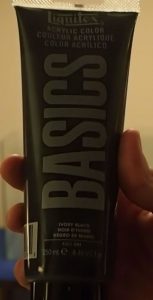
The acrylic paint worked fine but since I required a larger volume of paint I upgraded to a quart of Black Indoor/Outdoor Latex paint. I didn’t notice a difference between the two types of paint, it was just cheaper to buy the latex paint due to the quantity I needed.
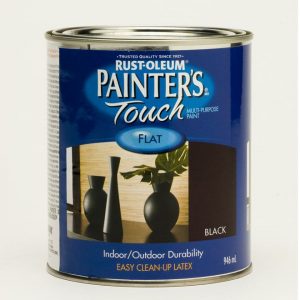
I alternated between doing one coat with horizontal strokes and one coat with vertical strokes and eventually…
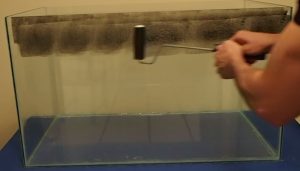
It was finished! I was actually pretty happy with the result… although I was definitely nervous through the first few coats.. “Is this ever going to cover..?”
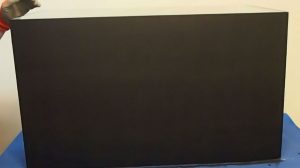
Wooden Trim
As stated above, I used wood to trim out the front facing hole where the door would go. I used:
- Oak 1″ x 3″ for the bottom
- Oak 1″ x 2″ for the top and sides
The purpose of the trim is three fold:
- Stop substrate from falling out
- A place to fasten the door and hinges
- A place for the door to rest and lock against
I decided to also paint the wood black to match the rest of the custom terrarium. I used the same latex paint from above, and I did 3 coats.
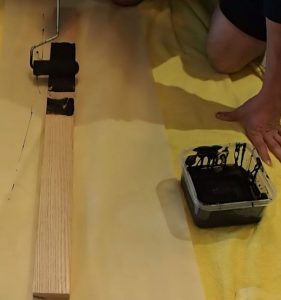

It was also important for me to seal the wood to protect it from moisture damage. I used 3 coats of Minwax Polyurethane to do the job.
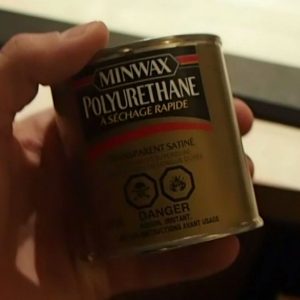
I prepped the wood by running very fine steel wool over the entire surface to remove any fine hairs and wiped off the dust with a dry cloth. Then, I brushed on the polyurethane.
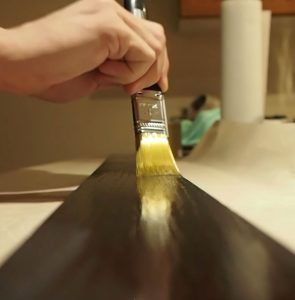
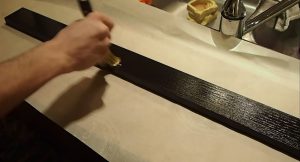
And of course, I went through the identical process with the side/top trim pieces!
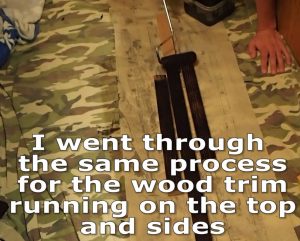
The Sample Door
Now it was time to assemble the door. This was the part of the build I was the most worried about. Acrylic cracks quite easily and it is priced at $70/sheet!
So instead of jumping right into drilling the door panel … I decided to exercise some patience and used a scrap piece of acrylic and scrap piece of oak to build a “test door”.
I used black 3″ door hinges, pictured below. This way I could get a feel for what drilling through acrylic was like.
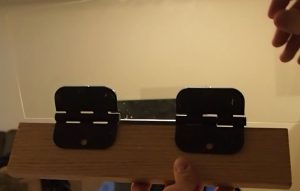
Instead of using screws for the top hinge, I replaced them with bolts and acorn nuts. Obviously, I couldn’t have 6 screws poking through the door into the enclosure.
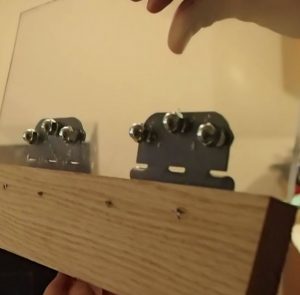
The Real Door
Once I felt ready I screwed the hinges to the bottom oak trim and then was ready to tackle drilling the holes for the door.
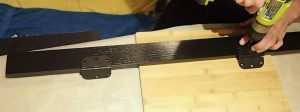
I dry fit the acrylic door (I bought the acrylic sheet from the local hardware store and cut it to size) and marked off where the hinge holes needed to be drilled with a dry erase marker.
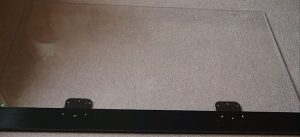
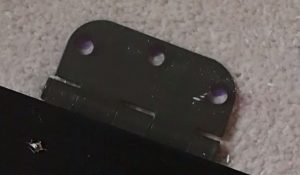
Drill time! The trick to drilling acrylic is you have to start small and slowly increase your bit size until you reach the desired size of hole. If you start with a bit to large, the acrylic will crack under stress… and so will you probably!
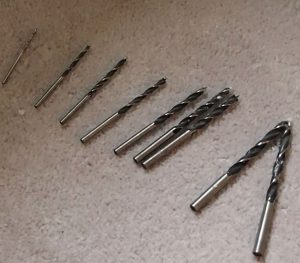
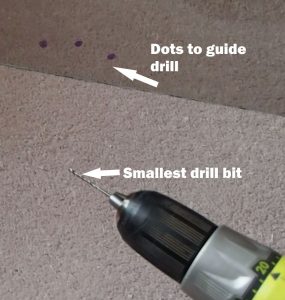
Eventually I made it to the final bit… 2 hinges, each with 3 holes, each hole took 9 drill bits… wow! But nothing cracked so going slow and steady was well worth it!
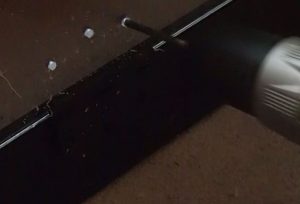
I ended up having to make wooden spacers to sit between the hinge and the acrylic door. Without the spacer the door wasn’t sitting vertical, luckily the spacers completely corrected that. I eventually painted them black.
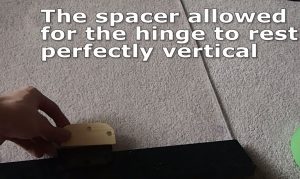
I also used black spray paint to paint the bolts black so they matched the hinge.
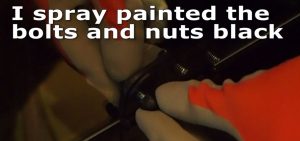
Whenever I create custom terrariums I try and make everything as professional looking as possible. I am happy with the way the hinges turned out, the wooden spacer completely blends in.
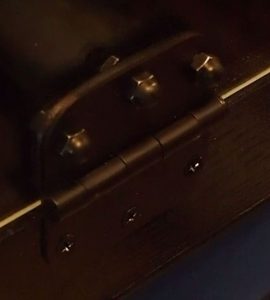
Mounting the Trim
At this point I was ready to fasten the wooden trim to the glass terrarium. Gluing wood to glass is a relatively uncommon thing to do… I’m not sure I have seen anyone else online build custom terrariums this way.
I used the products No More Nails as the main adhesive for this job. I have been very impressed with this stuff! It bonds well to almost anything.
I first roughed up the gluing edge of the wood with 60 grit sand paper, and then ran a generous bead of No More Nails down the entire length of the board.
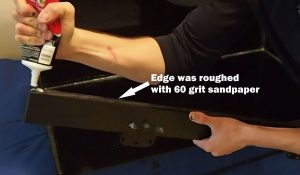
I used spring clamps to hold everything in place for 24 hrs.
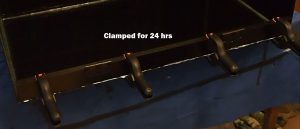
And then I followed the same process for the top and side trim!
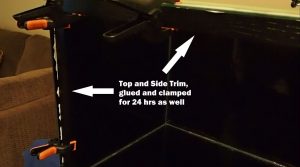
Once everything was cured, I ran a bead of silicone on the inside seam to seal it and also provide extra support. Now that everything is dry, it feels incredibly sturdy!
As a nice touch, I also painted out the trip on the top. This way I could keep the top clear as a viewing panel but also could hide the No More Nails and Silicone that was holding everything together.
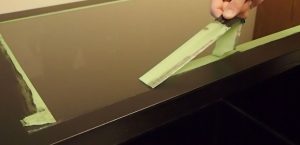
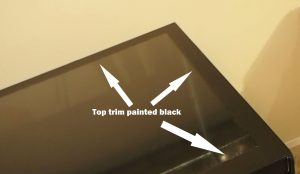
Cam Lock
The light at the end of the tunnel! All I had left to do at this point was to add locks to the door, and polish up the acrylic!
I went with cam (or cabinet) locks because they are quite easy to install and do a good job of keeping everything secure.
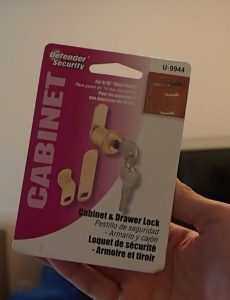
The only down side to these locks was the size of hole I needed to drill to fit them into the acrylic door. The locks require a 3/4″ hole, the largest drill bit I own is 5/8″ so I had to get creative.
Once I reach the 5/8″ bit, I dropped back to a smaller bit and slowly “carved” out the hole to increase its diameter.
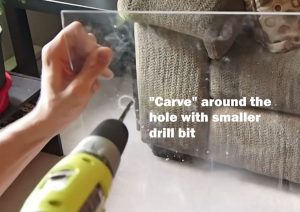
I also used sand paper and a whole lot of elbow grease to bring the hole to size.
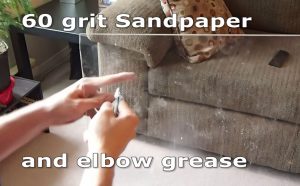
Eventually, it fit!
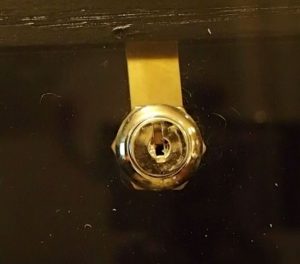
Final Steps
A couple small things left and then I was done!
First, I had to polish the acrylic. Acrylic scratches pretty easily and over all the panel needed a good cleaning. I used a headlight buff kit to make the door as clean as I could!
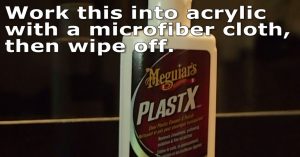
I wasn’t quite satisfied with the way the door was locking. The cam locks made the door feel very secure on the top and sides, but I felt like the bottom could be flexed enough for a snake to try and squeeze through (and probably get stuck).
So I picked up some storm door panel clips and put one in each corner. This completely solved the problem!
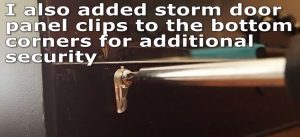
Custom Terrarium Complete
And just like that, I was finished! I have to stay I am pleased with the way this turned out! It looks a lot better than I thought it would.
Here’s the deal
I made a plan, and I stuck to it! Scroll up to the top and take another look at the original plan sketch I drew up before starting the build.
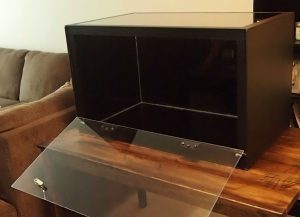
I live in an apartment, I do not own many tools. Because of that, I was required to very thoroughly plan the build. I built this terrarium in my head 100’s of times before even starting the work.
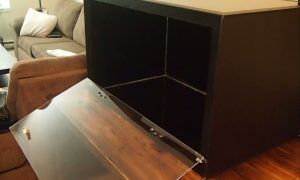
Do not be intimated by making custom terrariums of your own! If you create a detailed plan and follow it, you can build anything you like! You do not need any expensive tools or specific craftsman skills, I have neither.
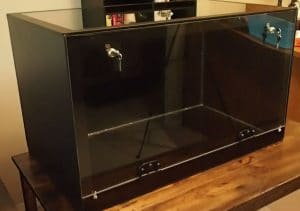
I hope this article can point you in the right direction, and like I said above, I believe this process would also work if you are wanting to convert a fish tank or aquarium into a terrarium!
CLICK HERE TO SEE THE TERRARIUM SET UP
Brazilian Rainbow Pictures (Click picture to expand)
Custom Terrariums Made with Glass Video
Thanks for visiting!
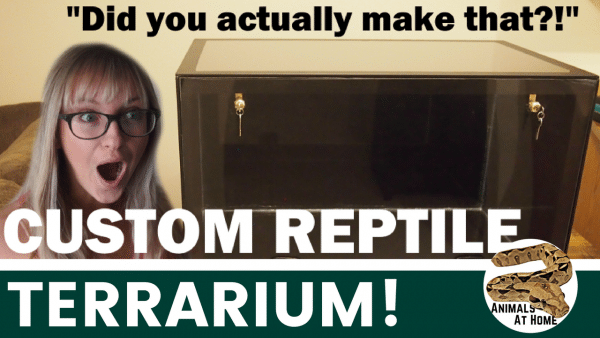
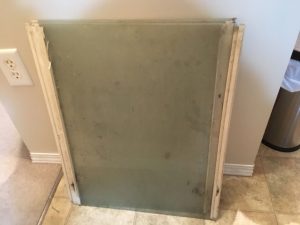
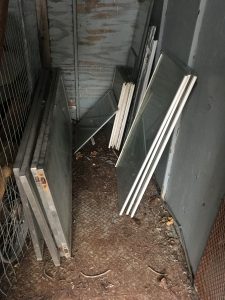
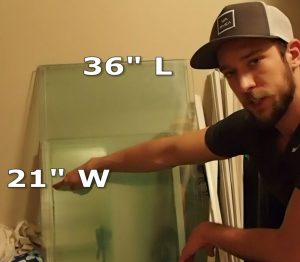
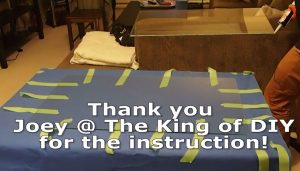
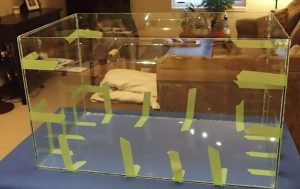
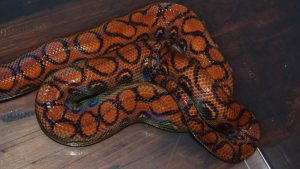
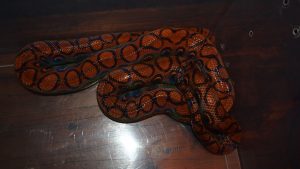
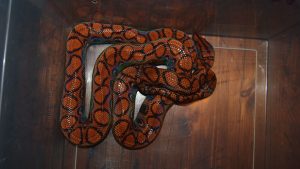
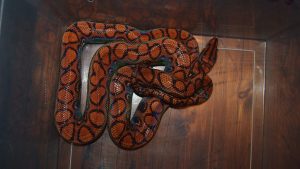

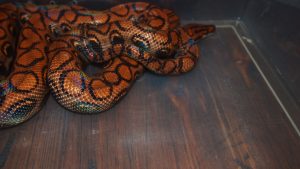
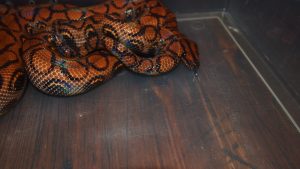
Great Job on the cage and you have a really beautiful Rainbow Boa. I’m in the process of setting up a couple of cages for my Thai and Blue Beauty Rat Snakes. They’re both over 7ft and only 2 years old and very arboreal so I want to get them into a larger cage. Going to modify an old TV cabinet for each of them, give them some height.
Thank you! Sounds like an awesome idea, I think that would look great. Arboreal set ups are by far my favorite. You may find my other project help https://www.animalsathome.ca/diysnakecage-1/ it’s not exactly a TV cabinet but some of the process may be similar.
Hey Dillon,
I’ve already viewed the link you recommended. Very helpful. I don’t know why I waited to comment until after I watched the glass enclosure video, just wanted to see everything I guess 🙂
Again, very good videos, I picked up a few tips that I will be using when I get moved and get the cabinets ready to modify.
Thanks again.
Are you thinking of doing anymore videos?
Thank you, I’m glad they helped! Yep, the plan is to keep posting when I can!